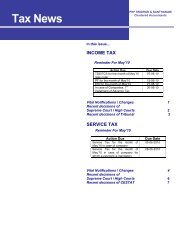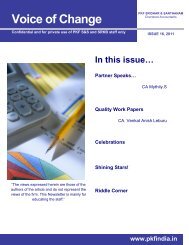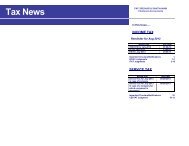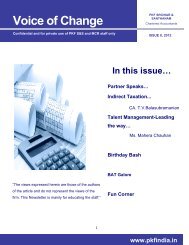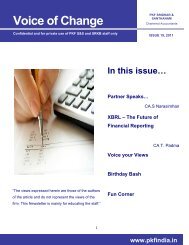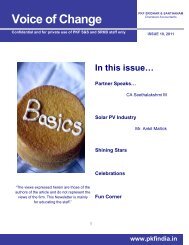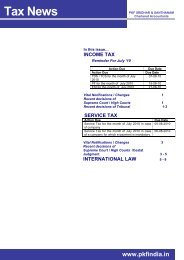Newsletter Issue No 7-15th July 2012 - PKF Sridhar & Santhanam
Newsletter Issue No 7-15th July 2012 - PKF Sridhar & Santhanam
Newsletter Issue No 7-15th July 2012 - PKF Sridhar & Santhanam
Create successful ePaper yourself
Turn your PDF publications into a flip-book with our unique Google optimized e-Paper software.
<strong>PKF</strong><br />
SRIDHAR & SANTHANAM<br />
Chartered<br />
Accountantsccountants<br />
Insights into Revised Schedule VI<br />
CA.J. Ramnarayanan<br />
<strong>No</strong>w all the listed companies’<br />
statutory audits are over, it is<br />
time for small and medium<br />
companies’ audits to be taken<br />
up.<br />
Unlike big companies, in small<br />
and medium companies, the role<br />
of auditor in guiding the finance<br />
department and the management<br />
on revised schedule VI is much<br />
more. Through this article, I<br />
would like to share with you<br />
certain basic things on revised<br />
schedule VI which should be<br />
taken care at the time of<br />
finalising presentation of<br />
accounts.<br />
Accounting Standards prevail<br />
over Revised Schedule VI<br />
Wherever there is conflict in<br />
presentation requirements<br />
between Accounting Standards<br />
and the Revised Schedule VI,<br />
the requirements of the<br />
Accounting Standard would<br />
always prevail. Classic example<br />
is Cash & Cash equivalents.<br />
While there is no differentiation<br />
between cash equivalents (short<br />
term highly liquid investments<br />
generally of upto 3 months<br />
maturity readily convertible into<br />
known amount of cash) and<br />
others in revised schedule VI, AS<br />
3 Cash flow Statements require<br />
the same to be bifurcated and<br />
shown separately. ICAI GN<br />
suggests Cash and Bank<br />
balances as the overall heading<br />
in BS under which Cash and<br />
cash equivalents may be listed.<br />
Classification between current<br />
and non-current<br />
Though the revised schedule VI<br />
gives the definition of what is<br />
current and non-current, many<br />
times there will always be doubt<br />
on whether to classify a<br />
particular asset/liability as current<br />
or non-current. To overcome this<br />
situation, we shall keep a simple<br />
thumb rule. In the case of assets,<br />
we shall go by expectation and<br />
in the case of liability, we shall go<br />
by right to defer settlement.<br />
This has been further illustrated<br />
in the ICAI’s FAQ on revised<br />
schedule VI in Questions 27 &<br />
28.<br />
What will come under Trade<br />
Payables<br />
Though Ministry of Corporate<br />
Affairs (MCA) had come out with<br />
definition of trade payables,<br />
many times there is doubt in our<br />
mind on whether amount due to<br />
employees should be treated as<br />
trade payables as it is in the<br />
nature of services rendered. To<br />
resolve this doubt, ICAI has<br />
clearly spelt out that as dues to<br />
employees are in the nature of<br />
contractual obligations under<br />
employer - employee<br />
relationship, the same need not<br />
be considered as part of trade<br />
payables through FAQ no.9 on<br />
revised schedule VI.<br />
Classification of long term<br />
employee benefits into current<br />
and non-current<br />
2<br />
www.pkfindia.in





